Ditapis dengan
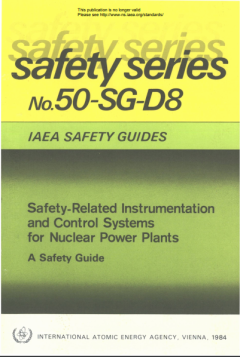
Safety-Related Instrumentation and Control System For Nuclear Power Plants
The systems which perform the vitai functions of monitoring and controlling systems and parameters at nuclear power plants are known as instrumentation and control (I&C) systems*. They are divided into two types: information systems and control systems. Both types operate by providing signals from measuring equipment. Information systems monitor plant parameters and systems; they display and…
- Edisi
- -
- ISBN/ISSN
- -
- Deskripsi Fisik
- -
- Judul Seri
- Safety Series No. 50-SG-D8
- No. Panggil
- 621.48 IAE s
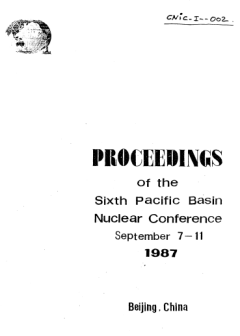
Proceedings of the Sixth Pacific Basin Nuclear Conference. Beijing China Sept…
Energy resource is an essential prerequisite for realizing the strategic objectives of the national economic development in China. By the end of this century the objectives of the national economic development are as fellows: the national annual gross value of industrial and agricultural output will be quadrupled as that in 1980; the annual average revenue per capita is expected to be 800-1000 …
- Edisi
- -
- ISBN/ISSN
- -
- Deskripsi Fisik
- -
- Judul Seri
- -
- No. Panggil
- -
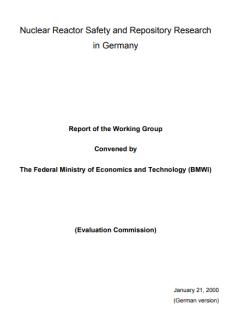
Nuclear Reactor Safety and Repository Research in Germany Report of the Worki…
The intensive funding of research in the field of nuclear reactor safety research by the German Federal Government in the last decades was a decisive contribution to keeping German reactors among the safest in the world. Considerable progress has also been made in the field of repository research which is regarded as being leading on an international scale. These achievements were made possible…
- Edisi
- -
- ISBN/ISSN
- -
- Deskripsi Fisik
- -
- Judul Seri
- -
- No. Panggil
- -
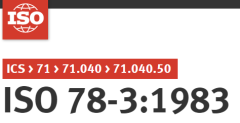
Chemistry-Layouts for Standard Part 3: Standard for Moleccular Absorption Spe…
Establishes a layout for standard methods of analysis of solutions in the visible and near ultra-violet regions. Gives some recommendations for their presentation and wording. The layout is preceded by a clause "Therminology and definitions", which supplements the information given in ISO 6286.
- Edisi
- -
- ISBN/ISSN
- -
- Deskripsi Fisik
- -
- Judul Seri
- ISO 78/3-1983 (E).
- No. Panggil
- -
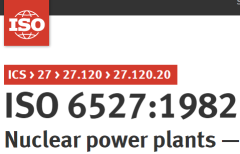
Nuclear Power Plants-Reliability data Exchange-General Guidlines
Identifies the typical parameters of a component that permit it to be characterized unequivocally and to allow the corresponding reliability data to be associated with those of other components having equivalent typical parameters. Parameters refer to technical characteristics including the physical principle of operation and quality level and to actual operating conditions and maintenance and …
- Edisi
- -
- ISBN/ISSN
- -
- Deskripsi Fisik
- -
- Judul Seri
- ISO 6527-1982 (E)
- No. Panggil
- -
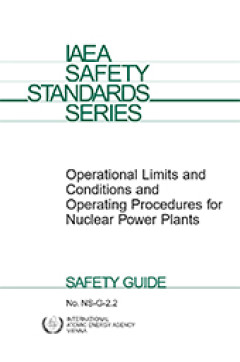
Operating Limits and Conditions and Operational Limits Procedures for Nuclear…
This Safety Guide provides guidance on the development, content and use of operational limits and conditions (limits on plant operating parameters) and operating procedures that affect them. It recommends how to meet the requirements established in Safety Standards Series No. NS-R-2, Safety of Nuclear Power Plants: Operation, setting out the responsibilities of the operating organization in set…
- Edisi
- -
- ISBN/ISSN
- -
- Deskripsi Fisik
- 52 p. : Illus. ; 24 cm
- Judul Seri
- Safety Standards Series No. NS-G-2.2
- No. Panggil
- 621.48 IAE d
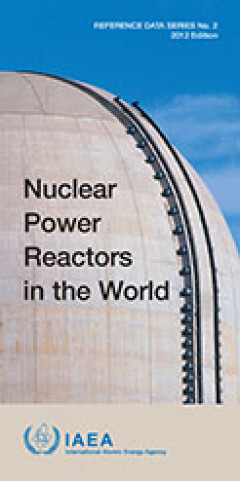
Nuclear Power Reactors in the World
This is the 32nd edition of Reference Data Series No. 2, which presents the most recent reactor data available to the IAEA. It contains summarized information as of the end of 2011 on power reactors that are in operation, under construction and shut down, and performance data on reactors operating in IAEA Member States, as reported to the IAEA. The information is collected through designated na…
- Edisi
- 2012
- ISBN/ISSN
- 9789201323101
- Deskripsi Fisik
- -
- Judul Seri
- -
- No. Panggil
- 539 IAE n
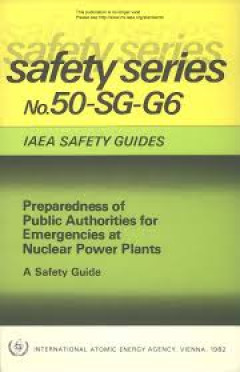
Preparedness of Public Authorities for Emergencies at Nuclear Power Plants, A…
This book consist : Introduction; Range of accidents to be considered in emergency planning; Responsibilities for emergency planning organization and action; Emergency organization; Emergency planning; Emergency assessments and protective measures; Public information and instruction; Training and exercises; Co-operation across boundaries. (Jml)
- Edisi
- -
- ISBN/ISSN
- 9201230826
- Deskripsi Fisik
- 46 p. : Illus. ; 24 cm
- Judul Seri
- Safety Series No. 50-SG-G6
- No. Panggil
- -
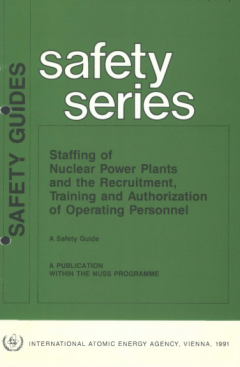
Staffing of Nuclear Power Plants and The Recruitment Training and Authorizati…
This guide outlines the factors to be considered to ensure that the operating organization has a sufficient number of qualified site personnel who are aware of their duties and responsibilities. It covers the organization for the nuclear power plant, the educational qualifications and experience of the persons recruited, the recruitment and training schedule, the training of operating personnel…
- Edisi
- -
- ISBN/ISSN
- 9201233914 / 00741892
- Deskripsi Fisik
- 59 p ; Illus. ; 21 cm
- Judul Seri
- Safety Series No. 50-SG-O1 (Rev.1)
- No. Panggil
- 621.8 IAE s

Certificate no. 000358 / Nuclear Devastation in Kazakhstan, Ukraine, Belarus,…
Photographer Robert Knoth and writer Antoinette de Jong collaborate on a poignant and infuriating indictment of the Nuclear Age in this crucial book on the human devastation in Kazakhstan, Ukraine, Belarus, the Urals and Siberia. Knoth's black-and-white photos gently document the deformed human beings affected by radiation, and show the small details of everyday life in the abandoned ghost …
- Edisi
- -
- ISBN/ISSN
- -
- Deskripsi Fisik
- 191 p. : Illus. ; 30 cm
- Judul Seri
- -
- No. Panggil
- -
 Karya Umum
Karya Umum  Filsafat
Filsafat  Agama
Agama  Ilmu-ilmu Sosial
Ilmu-ilmu Sosial  Bahasa
Bahasa  Ilmu-ilmu Murni
Ilmu-ilmu Murni  Ilmu-ilmu Terapan
Ilmu-ilmu Terapan  Kesenian, Hiburan, dan Olahraga
Kesenian, Hiburan, dan Olahraga  Kesusastraan
Kesusastraan  Geografi dan Sejarah
Geografi dan Sejarah